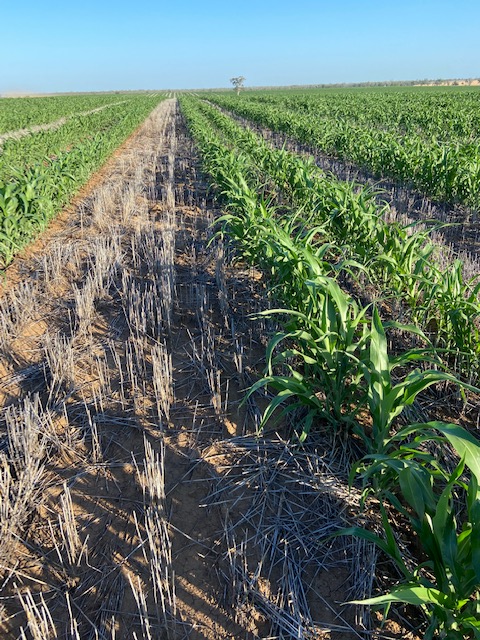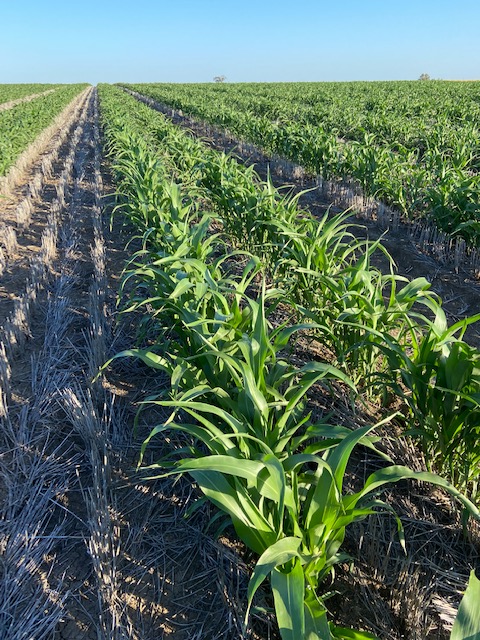
Surat Demonstration site
Details and history of the site
Location: Swerdna Downs Road. 20km south of Surat
Property name: Merino Downs
Consultant
Phil Lockwood, Meremley Agricultural Services
Site background
Populations of feathertop Rhodes grass have been present in the district since approximately 2010, with significant dispersal and population build up following the wet summers of 2011 and 2012.
Since that time, there has been a major focus on integrated management of FTR on this farm, that has resulted in some significant changes to management practices.
The demonstration paddock has been selected to show what can be achieved with ongoing vigilance in the management of FTR.
Overall, there is now a relatively light population of FTR in this paddock. However, as the field is on the boundary of the property, and bordering Swerdna Downs Road, there is ongoing incursion of isolated FTR plants coming from the roadside and beyond.
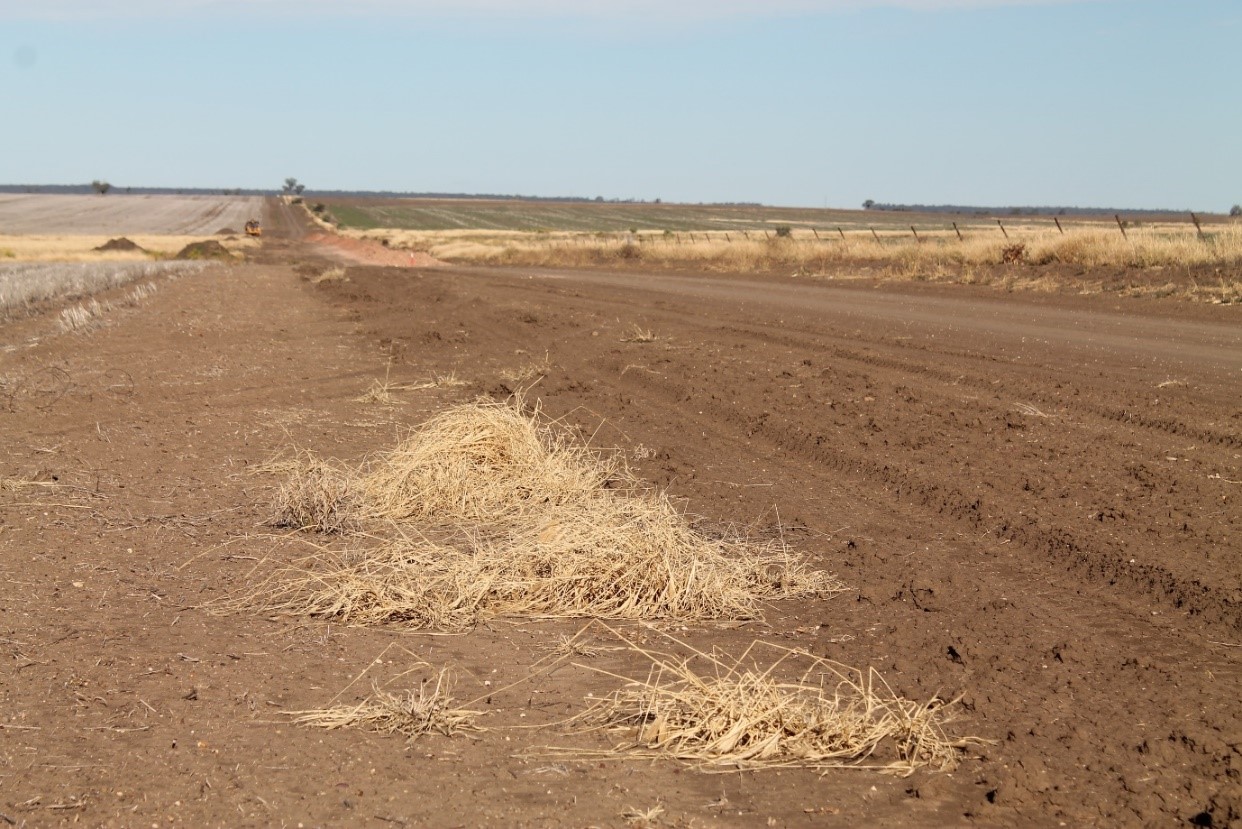
Old feathertop Rhodes grass plants along the edge of the public road.
The paddock is undulating and sensitive to erosion. There is a desire to progressively install contour banks for surface water management, but currently these are not in place in this paddock. Therefore, stubble retention is critical for water management, and this constrains the use of cultivation as a management tactic for FTR.

Erosion from March 2021 storms, even with good stubble cover in place.
The management plan for FTR centres around farm hygiene (identifying and removing individual plants as soon as possible) and a heavy reliance on residual herbicide and optical sprayers.
Farm vehicles are equipped with chip hoes, that will be used where individual plants are found.
Residual herbicides are a mainstay of fallow management across the farm. Where possible they are applied in front of a predicted rainfall event to ensure incorporation. The residual herbicide program for FTR commences in winter, to be assured that the residual herbicides are down on paddocks prior to the first seasonal germinations.
With a high reliance on residual herbicides there is conscious approach to ensure that pre-emergent herbicides are regularly rotated. In practice, this means that no more than approximately 1/3 of the fallow area is treated with any single residual herbicide option. Additionally, the same herbicide mix is not used for more than a maximum of 2 years on the same paddock, before rotating to a different option.
With three or more different residual fallow herbicide mixtures being used each year across the farm, attention to planning is required (results in the implementation of a more rigid crop rotation program). The more rigid crop rotation plan has seen more consistency in yields, as there is less likelihood of gambling on planting into a part-full soil moisture profile.
2020/21
- Paddock had Flanker wheat in 2020, harvested in October
- Dual Gold @ 2L/ha + Atrazine 900DF @ 2kg/ha was applied in front of a 22mm rain event in November
- Likely to be long fallow to sorghum 2021/22
- Lack of spring rain has resulted in clean field as of end 2020
Rainfall
- December – 44mm
- January – 120mm
- February – 90mm
- March – 130mm
- April – 18mm
- May – 0mm
- June – 47mm (4 falls)
- July – 41mm (3 falls)
- August – 3mm (1 fall)
Status updates
December 2020
FTRG site north of St George (Surat) remains very dry, see photo below.
Whole paddock had Dual Gold @ 2L/ha + Atrazine 900DF @ 2kg/Ha applied post harvest and just prior to a 22mm rain event. No FTRG emering at this stage.
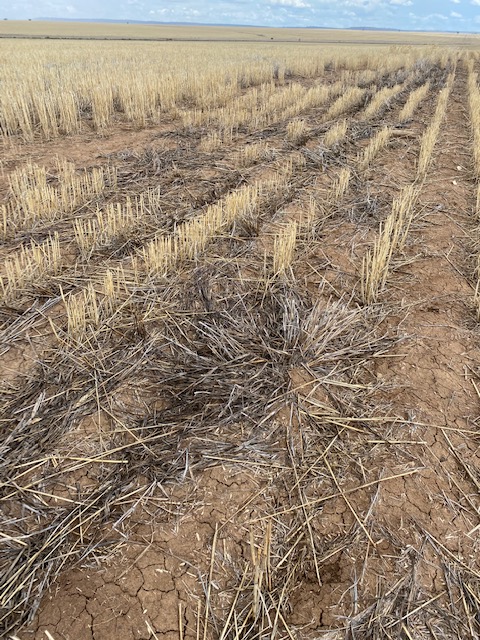
Site 30 December 2020. Note old, scattered FTR plants coming into the paddock from the paddock boundary.
January 2021
Photo below was taken 10 days after 35mm of rain.
This site has received roughly 200mm of rain since the residual herbicides were put down (Metolachlor + Atrazine) in early November.
At this stage, there is still no FTRG emerging, residual herbicides continue to work very well.
This paddock was sprayed with Glyphosate + 2,4-D in late January to control volunteer wheat, peachvine and rhycosia; no other treatment has been required at this stage.
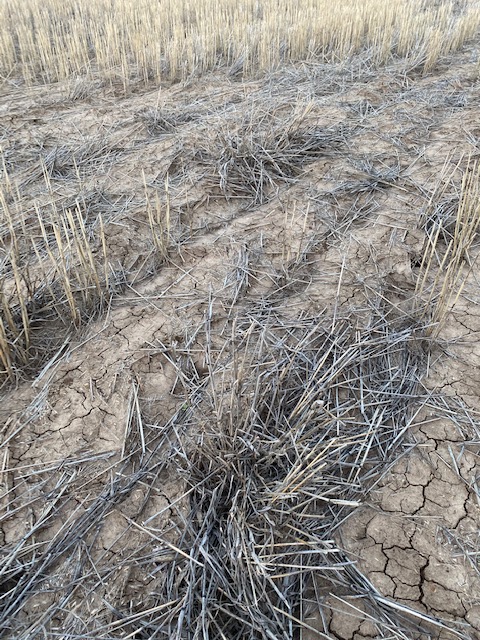
Site 21 January 2021. Known clumps of old FTR are particularly monitored for any new germinations which may signal the breakdown of the residual treatments.
A further 50mm of rain fell last Saturday (6th February), the paddock has not yet been assessed, will do so in the next 7 days.
February 2021
Inspection in late February indicated that the Dual + atrazine was breaking down, with seedling weeds coming through (including FTRG). A broadacre application of Roundup CT @2L/Ha + Amicide 625 @ 500mls/Ha + Comet 400 @ 100mls/Ha was applied in early March with a plan to come back and double knock the FTR. Unfortunately, heavy rainfall in March prevented the double knock from being applied.
March 2021
Ongoing wet weather has allow isolated FTR plants to establish which will require a pass from an optical sprayer to get back under control.
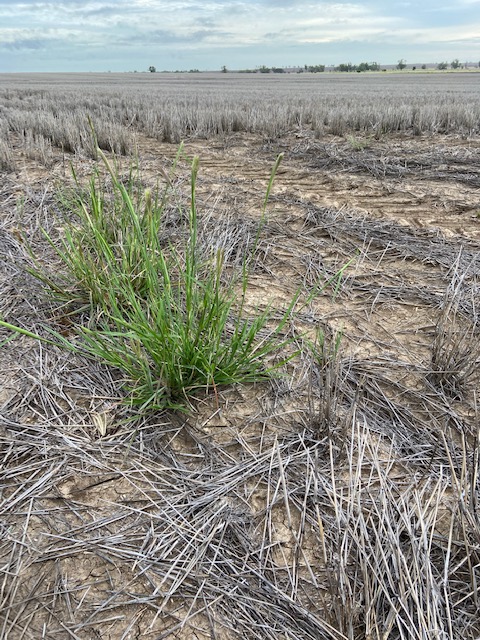
Site 22 March 2021
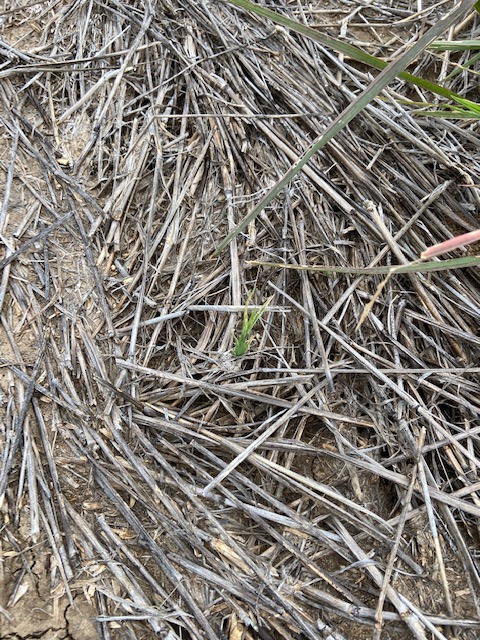
Site 23 March 2021
May 2021
As the farm owns a Weedit optical sprayer (with a second about to be added) there is opportunity to target isolated weeds and keep the overall weed seed bank low.
Following the rain and extended wet conditions in March and into April, which prevented spraying, a mixed population of scattered weeds were present, with some quite advanced when the Weedit application was able to be applied.
The application of Biffo (Glufosinate) @ 6L/100L + Glyphosate @ 6L/100L was selected due to the environmental conditions at the time and the weed spectrum present (scattered wild turnip, Indian hedge mustard, peachvine, sowthistle, barnyard grass and feathertop Rhodes grass). Generally this application has achieved a good result (pictures below) although there was still a level of green foliage on some sowthistle and barnyard grass plants.
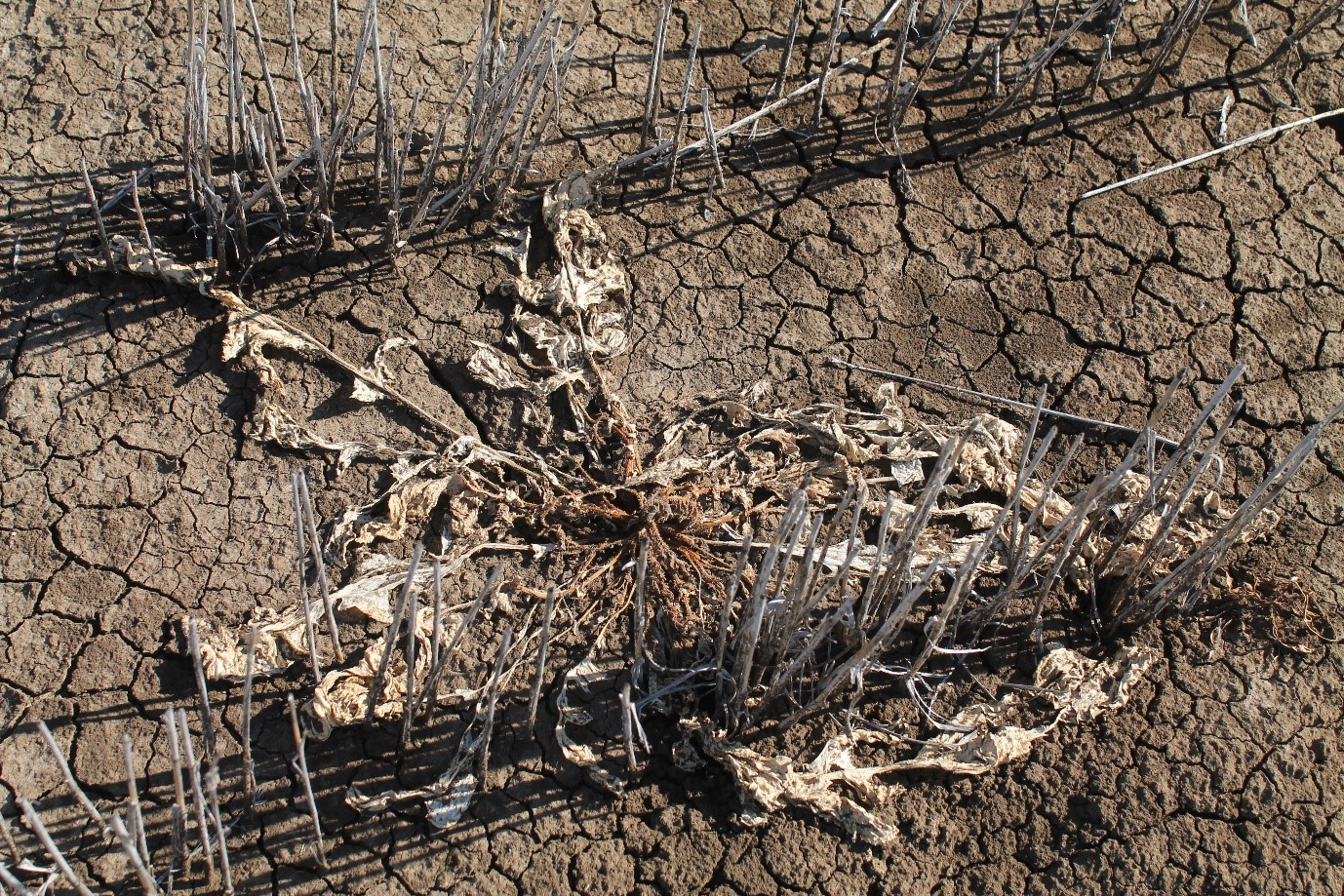
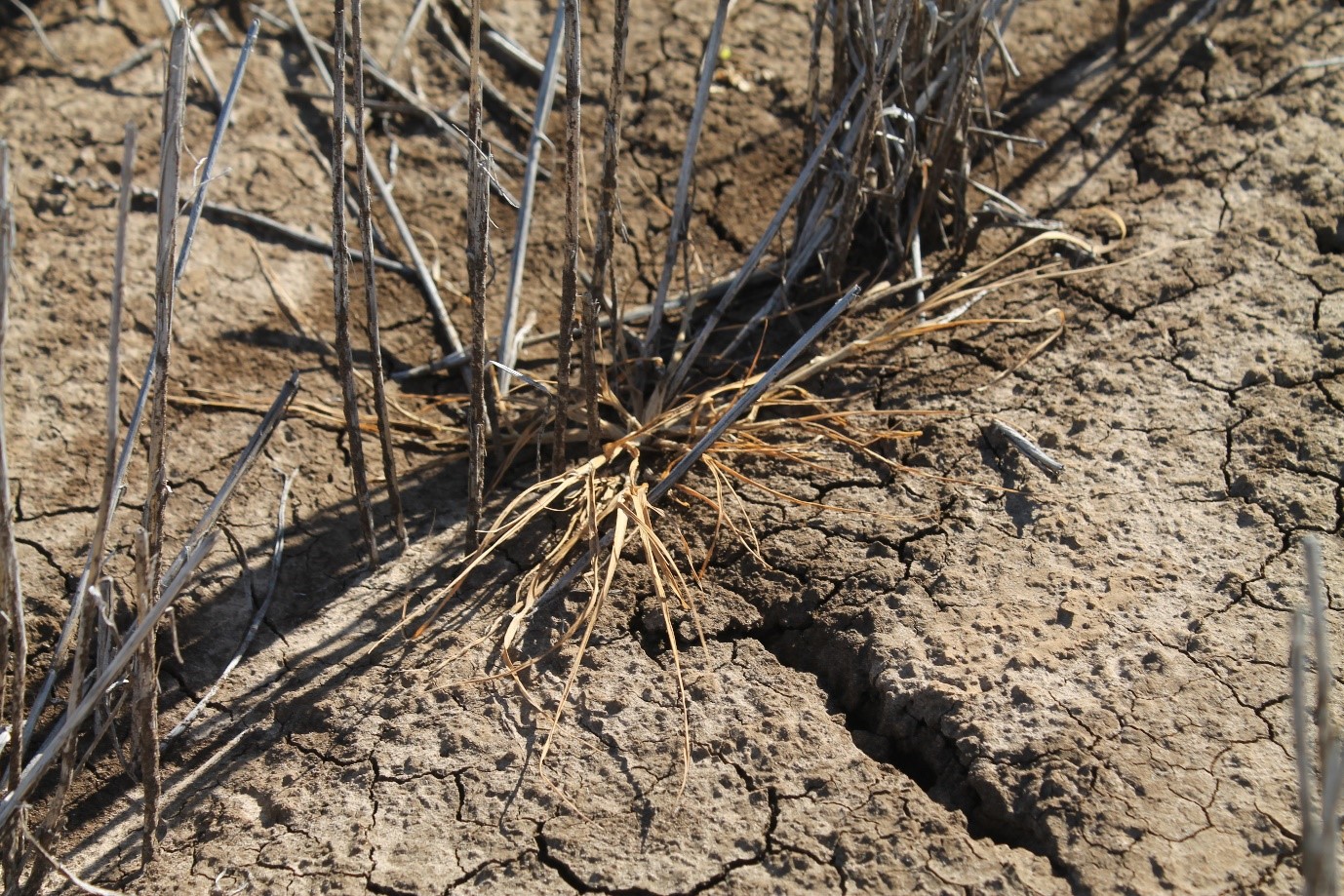
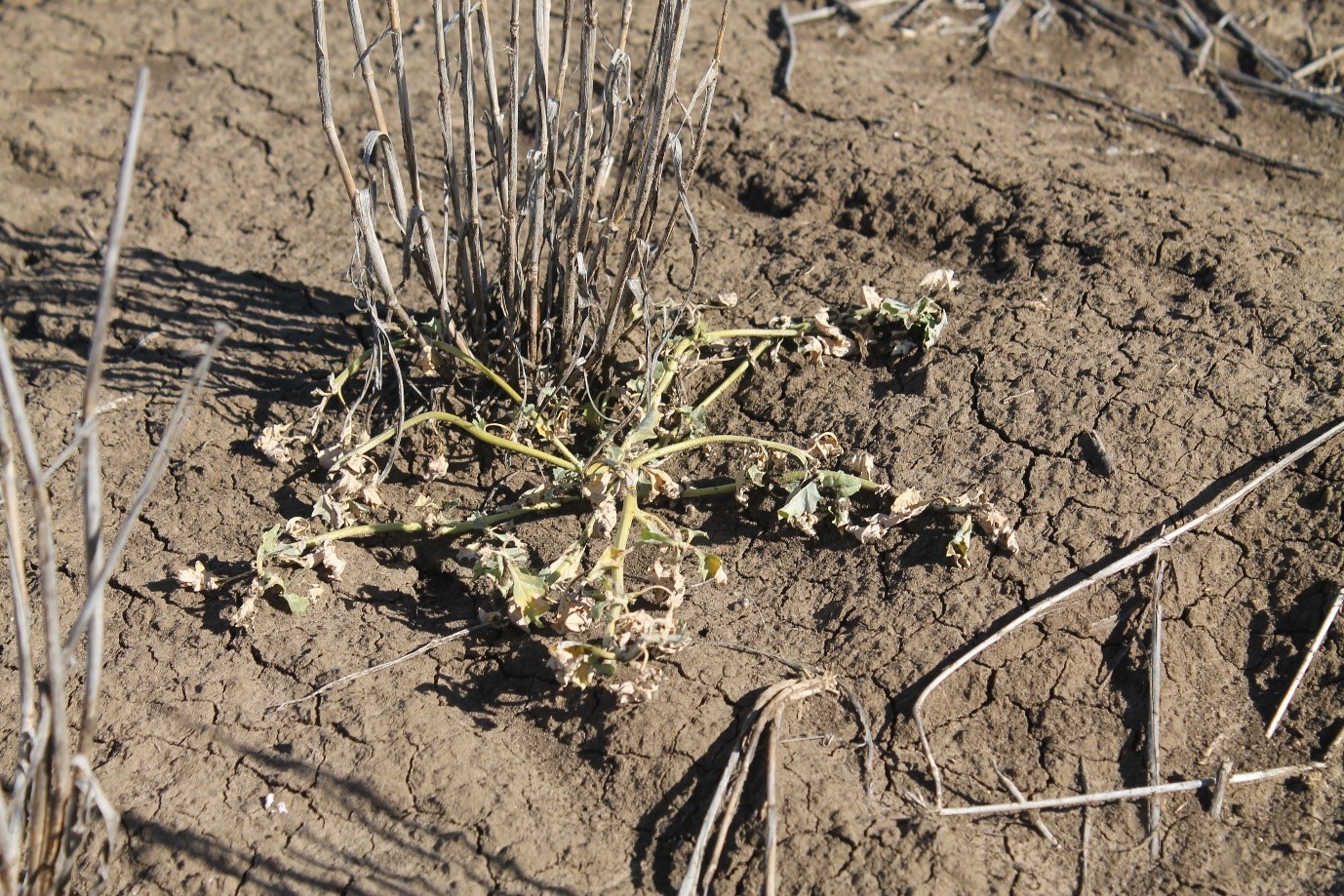
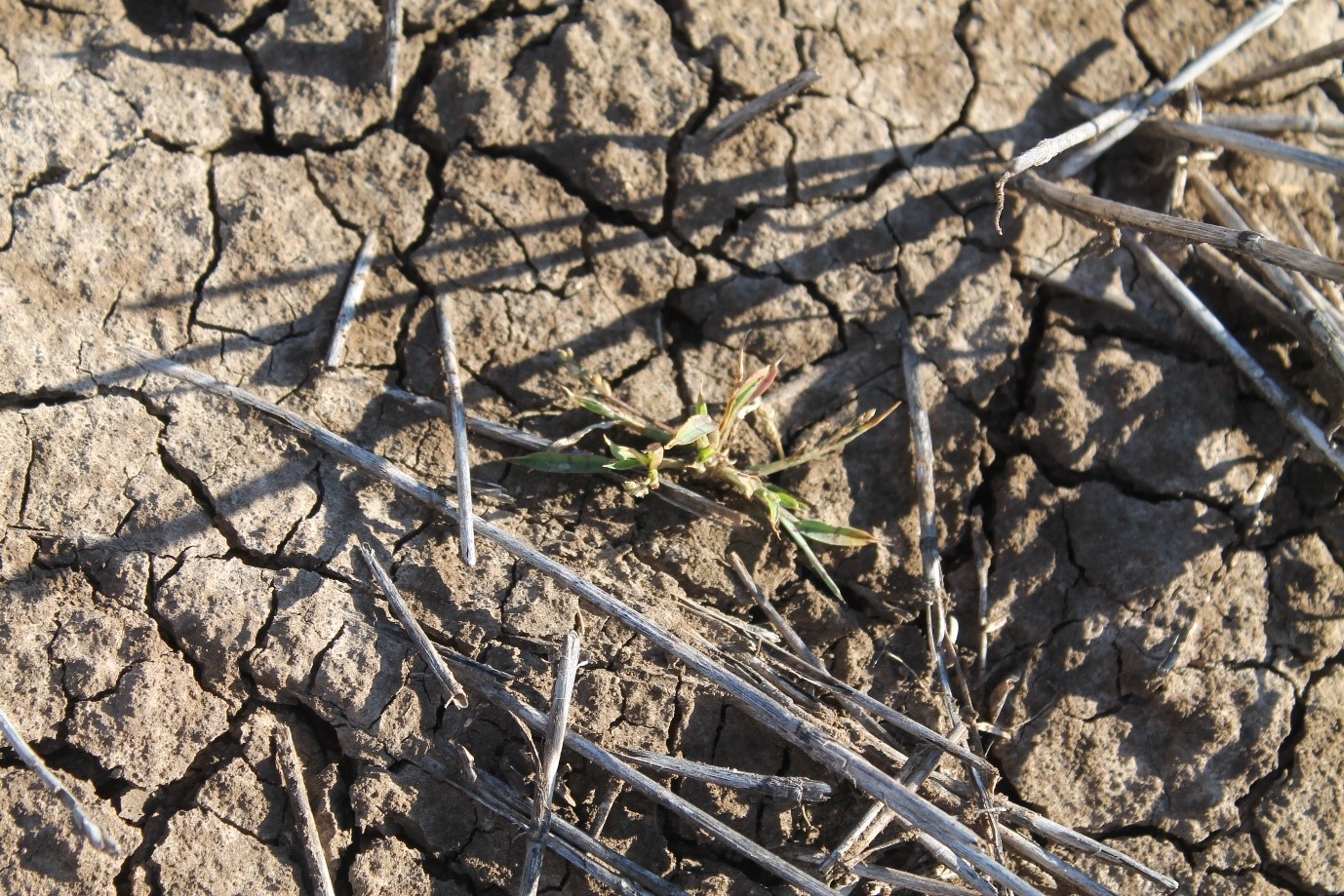
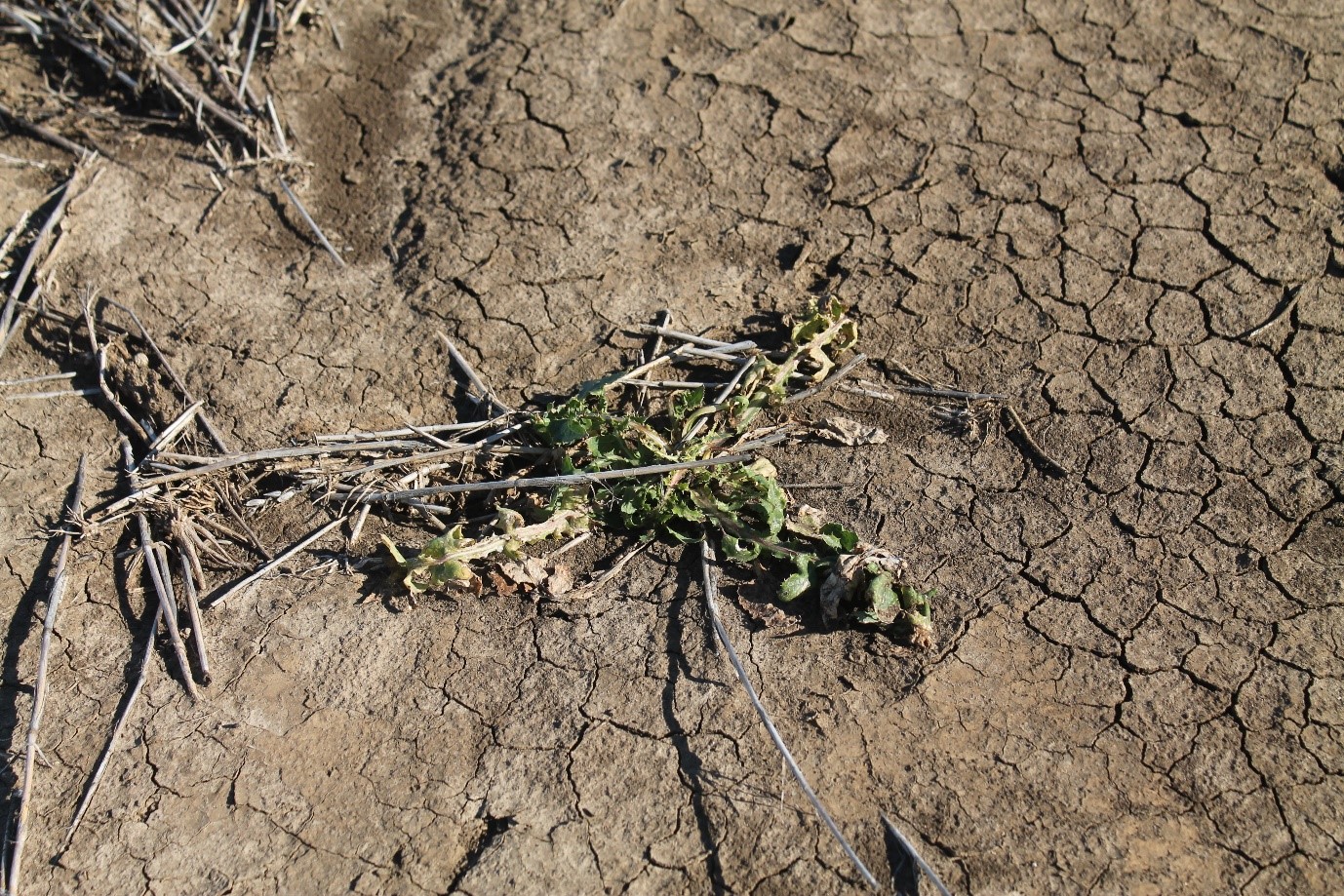
This Weedit application also provided good knockdown of scatted FTR plants encroaching from the roadside.
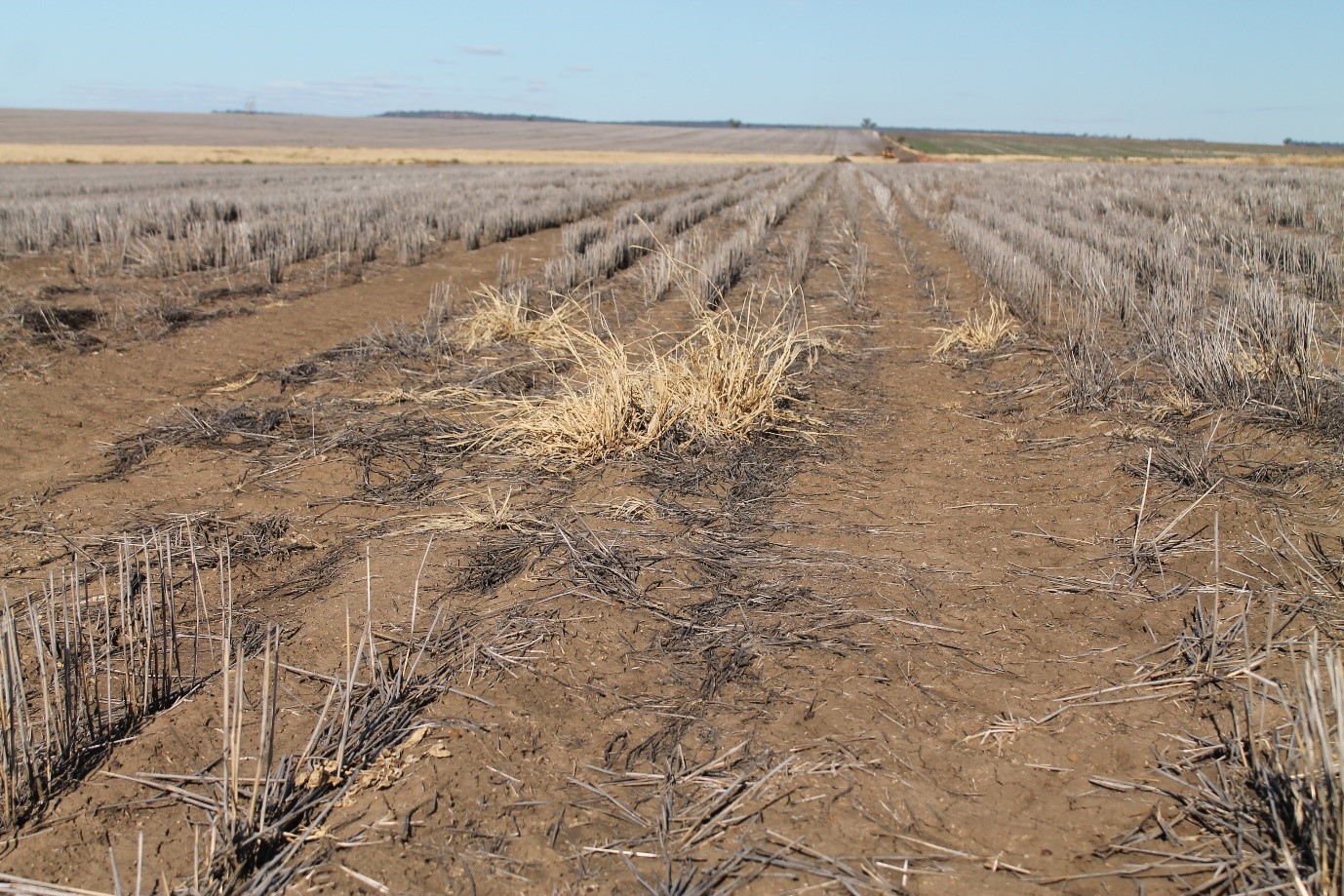
June 2021
The plan for this paddock is for an early spring plant of grain sorghum, as there is currently a full moisture profile.
Residual herbicides were topped up (Dual Gold @1L/Ha + atrazine @ 2kg/Ha) just prior to a 14mm rain event which fell on the 7th of June.
August 2021
12-15 August – Camera Pass (RCT + Amicide 625) to control any winter germinations. There was very little, if any, FTR present at this time, but this application has done a good job on other weeds present.
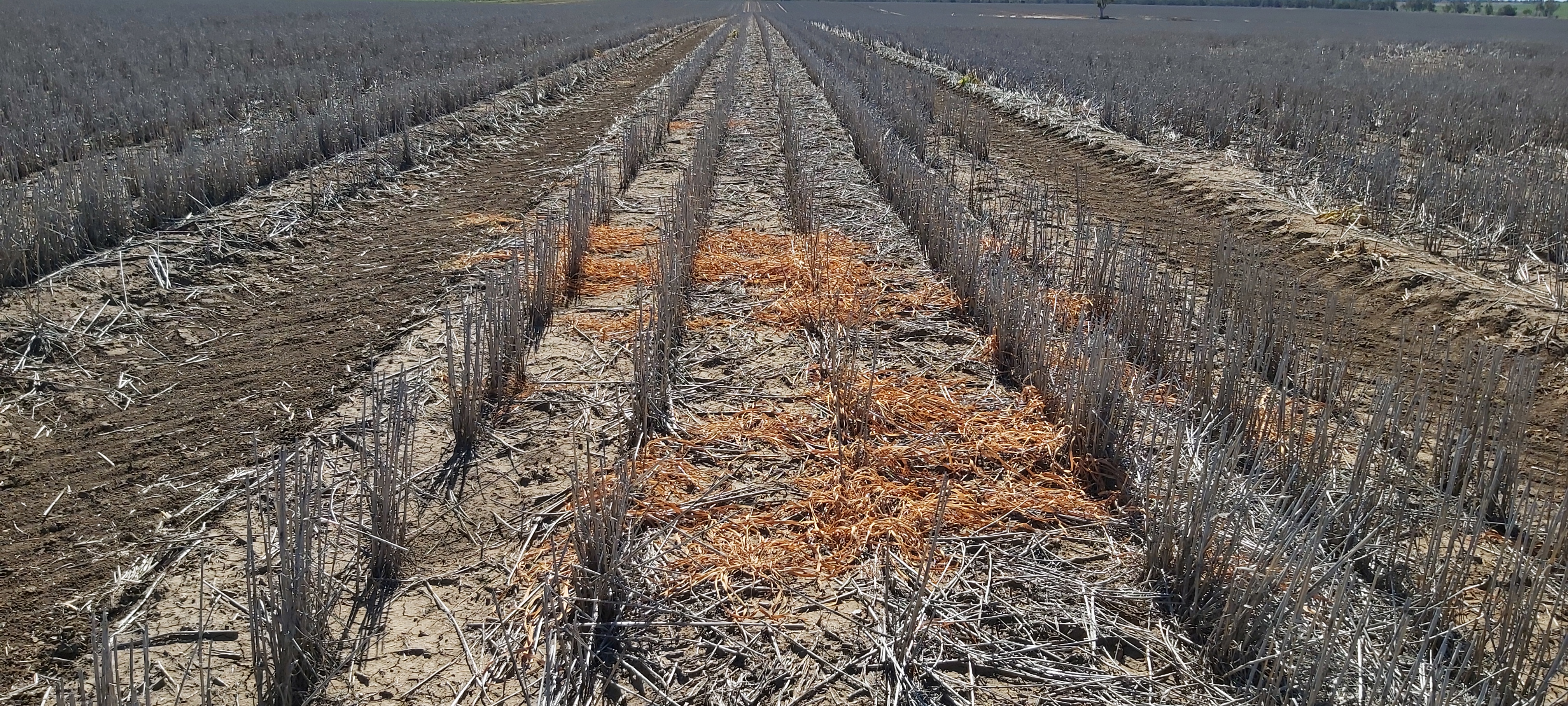
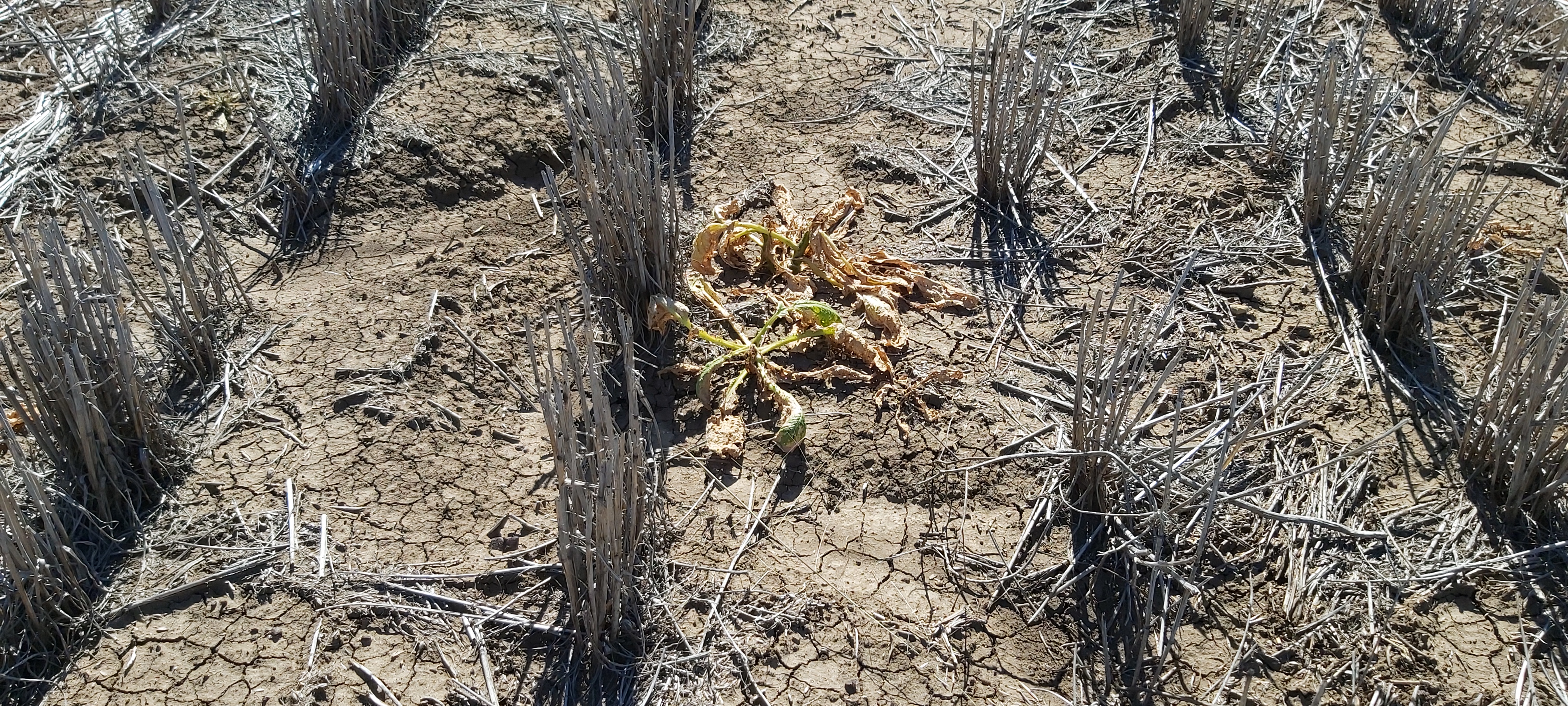
25 August – Phil Lockwood and Mark Congreve (ICAN) held a field walk with local growers to discuss what is planned for this paddock and general strategies that are effective in suppressing feathertop Rhodes grass. The intention of this case study paddock is to demonstrate the value in keeping the long fallow clean of feathertop Rhodes grass in order to drive down the seedbank, as this paddock is planned to be planted to dryland sorghum where there are limited effective control options should FTR establish in crop. Starting with a clean paddock, low seed bank numbers and a split application of residual herbicides is the foundation of successfully minimising the impact of FTR when growing sorghum.
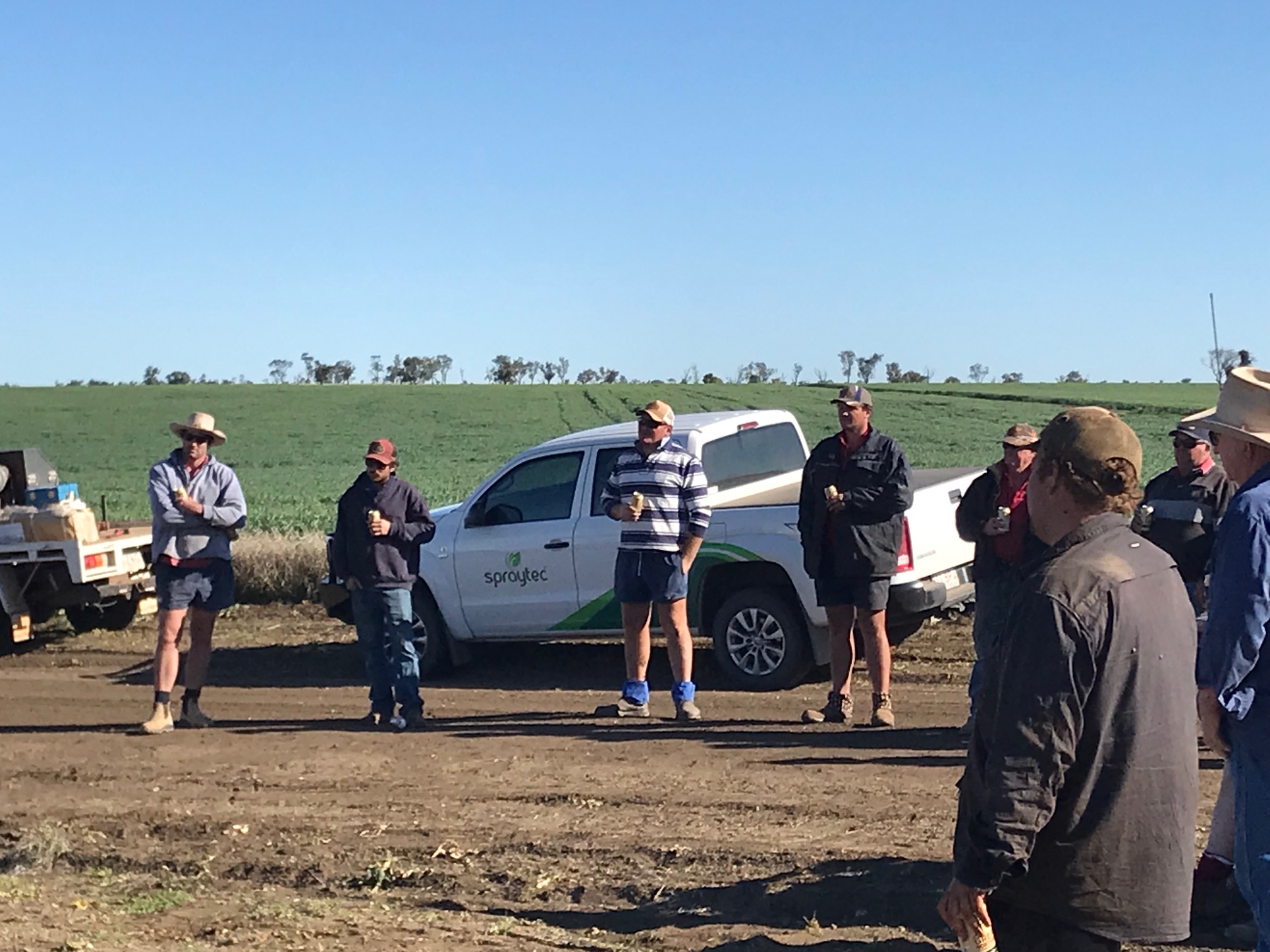
(Photo: Ross Beasley)
The paddock appears relatively clean of any weeds following only light rainfall during August. Later this week a pre-plant spray (Roundup CT @ 1.5L/ha + Amicide 625 @ 800mls/ha) is planned to clean up any existing escapes.
A brief cold snap this week is likely to have dropped soil temperature, so planting has been slightly delayed until temperatures are forecast to be rising into next week. Sorghum planting is planned to commence in this paddock over the weekend/early next week.
October 2021
Surat site planted to MR Taurus grain sorghum very early September (single skip); currently 5-8 leaf.
Dual Gold 1L/ha + Atrazine 1kg/ha applied OTT 29/9/21 just in front 32mm of rain.
Quite a bit of soft rolly polly coming through residuals; will target in the next 7-10 days.
Very little sign of any FTR at this stage.
Rain for September and October is as follows;
- September - 32mm
- October - 11mm
